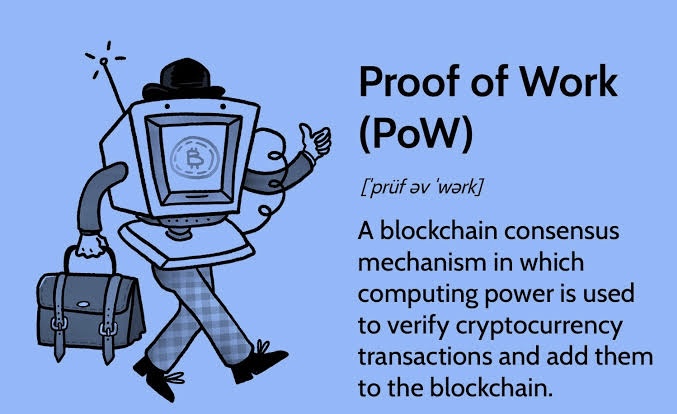The original goal for cryptocurrencies included decentralisation as a major component. To do so, a method of confirming transactions without the involvement of financial institutions was required. Proof of work was the first answer to this problem.Proof of work (PoW) is a method of adding fresh blocks of transactions to the blockchain of a cryptocurrency. In this scenario, the job entails creating a hash (a long string of characters) that matches the current block’s target hash. This earns the crypto miner the privilege to add that block to the blockchain and get rewards. Because proof of work is the consensus technique used by the first cryptocurrency, Bitcoin, the cryptocurrency began with it (CRYPTO:BTC). It’s well-known for its safety, but it’s also notorious for its inefficiency and negative environmental impact.
You’ll have a better understanding of the coins that use proof of work if you comprehend it. This can also assist you in deciding where to invest your crypto funds. Keep reading for a full explanation of proof of work.
Definition of Proof of Work
Cryptocurrencies lack centralised gatekeepers to ensure that new transactions and data added to the blockchain are accurate. Instead, they rely on a network of participants to confirm incoming transactions and add them to the chain as new blocks.
Proof of work is a consensus technique that allows network participants—known as miners—to determine which of them are authorised to perform the lucrative chore of confirming new data. It’s profitable because miners are compensated with fresh crypto for correctly validating new data and not cheating the system.
Proof of work is a software method used by Bitcoin and other cryptocurrencies and blockchain applications to ensure that blocks are only considered genuine if they cost a specific amount of processing power to produce. It’s a decentralised network consensus technique that allows anonymous entities to trust one another.
Why Is Proof of Work Important?
Satoshi Nakamoto established the first cryptocurrency, Bitcoin, in 2008. Nakamoto wrote a well-known white paper in which he described a digital currency based on proof-of-work protocols that would allow safe peer-to-peer transactions without the need for a centralised authority.
The double-spend problem was one of the obstacles that previously hampered the establishment of a viable digital currency. Because cryptocurrency is simply data, a technique to prevent users from spending the same units in multiple places before the system can record the transactions is required.
While it would be difficult to spend the same dollar bill twice, anyone who has replicated a computer file by copying and pasting can undoubtedly conceive how digital money could be spent twice—even ten times or more. The double-spend problem was overcome by Nakamoto’s consensus technique. Proof of work helps avoid duplicate spending by motivating miners to verify the integrity of new crypto transactions before adding them to the distributed ledger known as the blockchain.
How the Proof of Work Model Works
A consensus process used to confirm and record bitcoin transactions is the proof-of-work model. A blockchain, which is a public ledger made up of blocks of transactions, is present in every cryptocurrency. Each block of transactions in a proof-of-work cryptocurrency has a unique hash. A crypto miner must generate a target hash that is less than or equal to the block’s hash in order for the block to be confirmed.
Miners do this by employing mining machines that generate computations quickly. The goal is to be the first miner to reach the target hash, as that miner will be able to update the blockchain and get cryptocurrency incentives.
Because getting the target hash is difficult, but verifying it isn’t, proof of work in bitcoin works well. The method is complicated enough to prevent transaction records from being tampered with. At the same time, it’s simple for other miners to examine a target hash once it’s discovered.
How Bitcoin Uses Proof of Work
When a Bitcoin transaction is made, it is subjected to a security check and then gathered into a block to be mined. The block is then hashed using Bitcoin’s proof-of-work mechanism. Bitcoin employs the SHA-256 algorithm, which always generates hashes of 64 characters
Miners compete to generate a target hash that is lower than the block hash. The winner will get the privilege of adding the most recent block of transactions to Bitcoin’s network. They are also rewarded with Bitcoin in the form of newly created coins and transaction fees. Bitcoin has a predetermined maximum supply of 21 million coins, although miners will continue to be compensated for their services after that.
Bitcoin’s proof of work algorithm seeks to add a new block every ten minutes. To do so, it adjusts the difficulty of mining Bitcoin based on the rate at which miners add blocks. Hash computations become more difficult if mining occurs too quickly. They become easier if the pace is too sluggish.
In conclusion, the decentralized networks used by cryptocurrencies and other defi applications lack any central governing authority, so they employ proof of work to ensure the integrity of new data.

